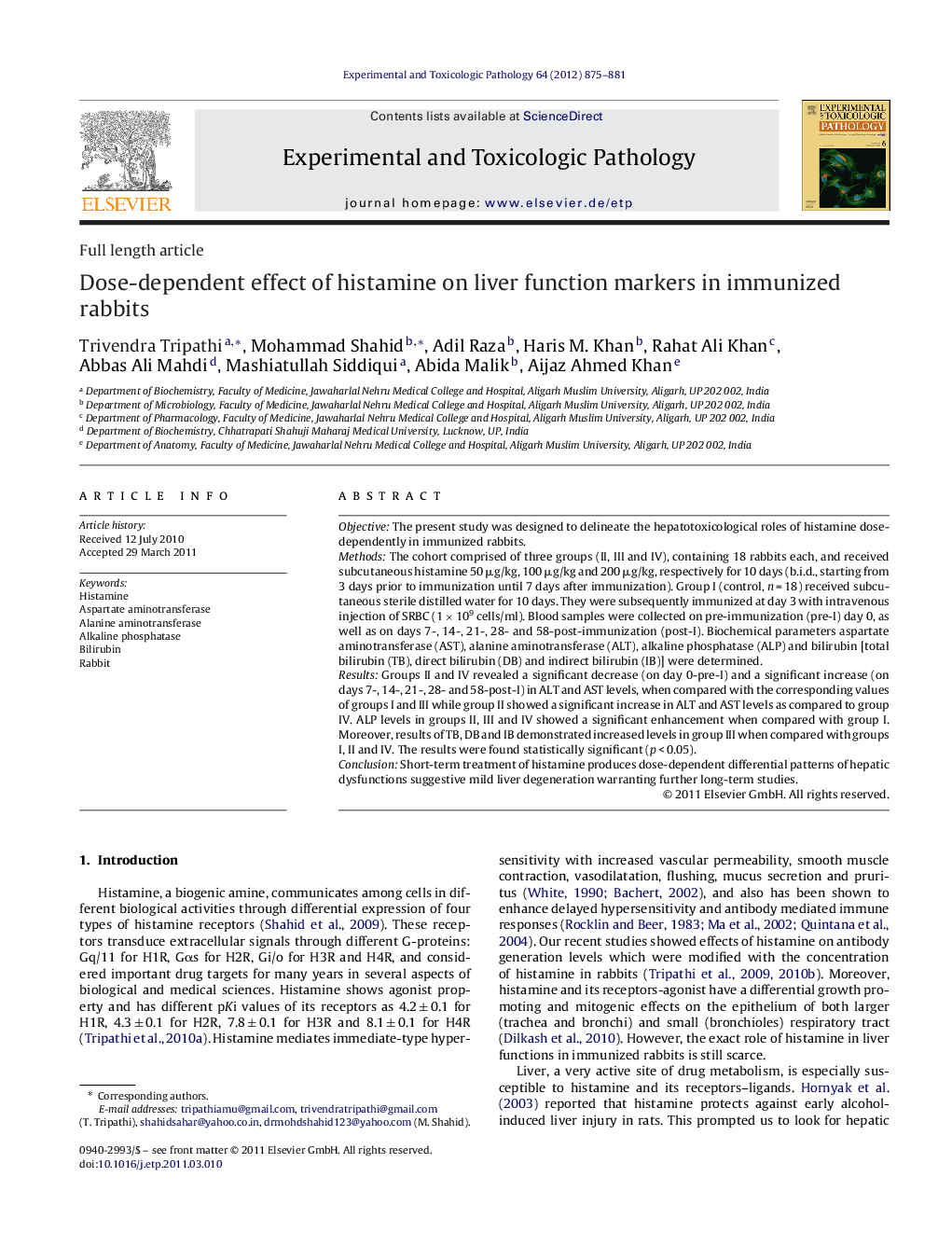| Article ID | Journal | Published Year | Pages | File Type |
|---|---|---|---|---|
| 2499336 | Experimental and Toxicologic Pathology | 2012 | 7 Pages |
ObjectiveThe present study was designed to delineate the hepatotoxicological roles of histamine dose-dependently in immunized rabbits.MethodsThe cohort comprised of three groups (II, III and IV), containing 18 rabbits each, and received subcutaneous histamine 50 μg/kg, 100 μg/kg and 200 μg/kg, respectively for 10 days (b.i.d., starting from 3 days prior to immunization until 7 days after immunization). Group I (control, n = 18) received subcutaneous sterile distilled water for 10 days. They were subsequently immunized at day 3 with intravenous injection of SRBC (1 × 109 cells/ml). Blood samples were collected on pre-immunization (pre-I) day 0, as well as on days 7-, 14-, 21-, 28- and 58-post-immunization (post-I). Biochemical parameters aspartate aminotransferase (AST), alanine aminotransferase (ALT), alkaline phosphatase (ALP) and bilirubin [total bilirubin (TB), direct bilirubin (DB) and indirect bilirubin (IB)] were determined.ResultsGroups II and IV revealed a significant decrease (on day 0-pre-I) and a significant increase (on days 7-, 14-, 21-, 28- and 58-post-I) in ALT and AST levels, when compared with the corresponding values of groups I and III while group II showed a significant increase in ALT and AST levels as compared to group IV. ALP levels in groups II, III and IV showed a significant enhancement when compared with group I. Moreover, results of TB, DB and IB demonstrated increased levels in group III when compared with groups I, II and IV. The results were found statistically significant (p < 0.05).ConclusionShort-term treatment of histamine produces dose-dependent differential patterns of hepatic dysfunctions suggestive mild liver degeneration warranting further long-term studies.
